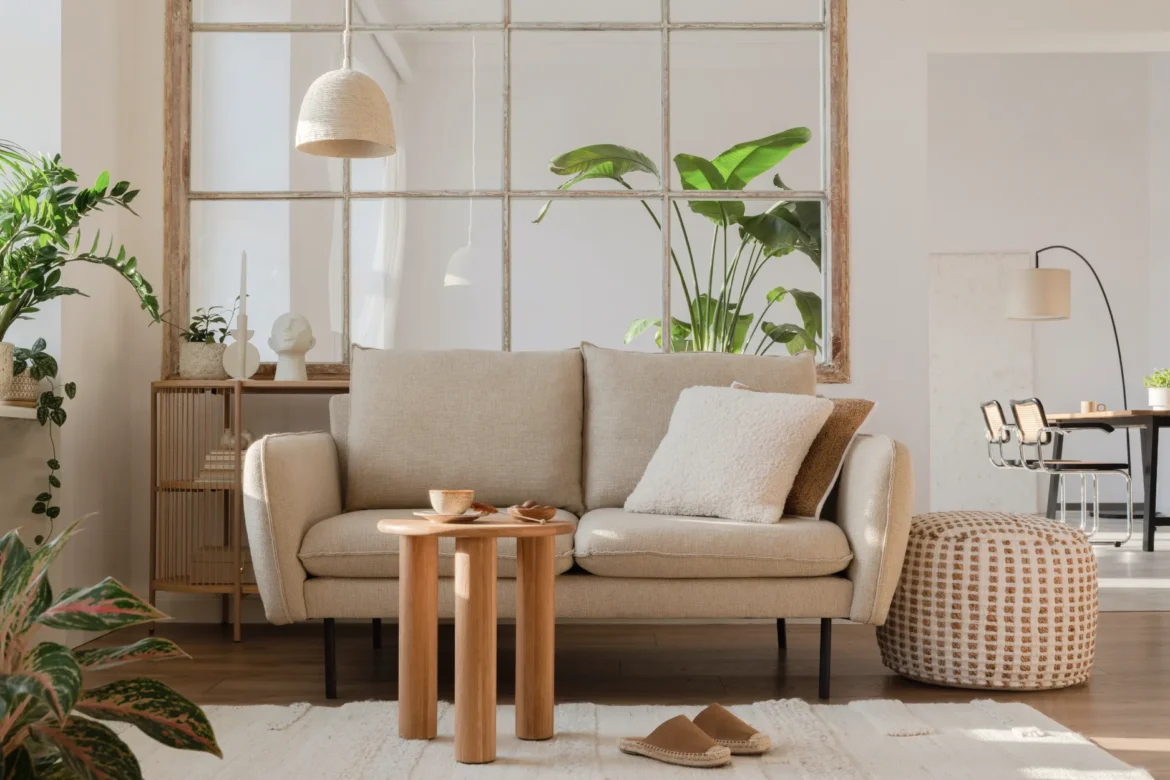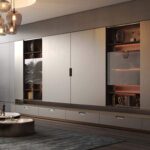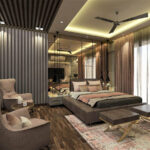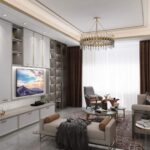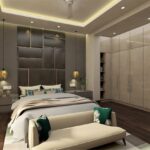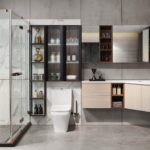4 Tips For Full Home Design: Sourcing Best Furniture And Materials
Overview
Transform your space with our ultimate guide! Discover 10 steps to full home design mastery, crafting a personalized sanctuary of style and comfort.
Designing a home is like telling your life story through the language of colors, shapes, and textures.
Jane Q. Designer
Step into the enchanting world of full home interior design, where every corner holds the potential to unfold the narrative of your unique journey. Jane Q. Designer’s metaphorical brush strokes on the canvas of a home remind us that the art of design is not just about arranging furniture; it’s about creating a living story that resonates with your essence. Welcome to our comprehensive guide on sourcing furniture and materials for full home interior projects, a journey that goes beyond aesthetics to infuse your living space with personality and purpose.
In the realm of interior design, whether you’re an experienced designer seeking inspiration or a homeowner dreaming of a space that feels uniquely yours, this guide is your roadmap. It’s not just about making your home look good; it’s about curating an environment that feels like an extension of your soul—a place where comfort meets creativity.
Imagine your home as a gallery, each room a curated exhibit expressing a facet of your personality. We’ll embark on this adventure together, exploring the art and science of selecting furniture and materials. From the broad strokes of choosing a design style that resonates with you to the nuanced decisions of fabric choices and lighting fixtures, we’ll navigate the landscape of possibilities.
As we journey through the pages, we’ll unveil the secrets of effective planning, smart budgeting, and the joy of discovering unique pieces that speak to your individuality. Working with suppliers becomes a collaborative dance, and customization transforms your space into a bespoke masterpiece. We’ll even dive into the realm of quality control, ensuring that every element stands as a testament to both beauty and durability.
So, let’s embark on this creative expedition together, transforming your house into a haven where every piece of furniture and material tells a chapter of your story. Get ready to immerse yourself in the art and heart of sourcing for a full home interior, where every detail is a stroke of personal expression. The canvas awaits, and the story is yours to tell.
Planning Your Full Home Interior Project
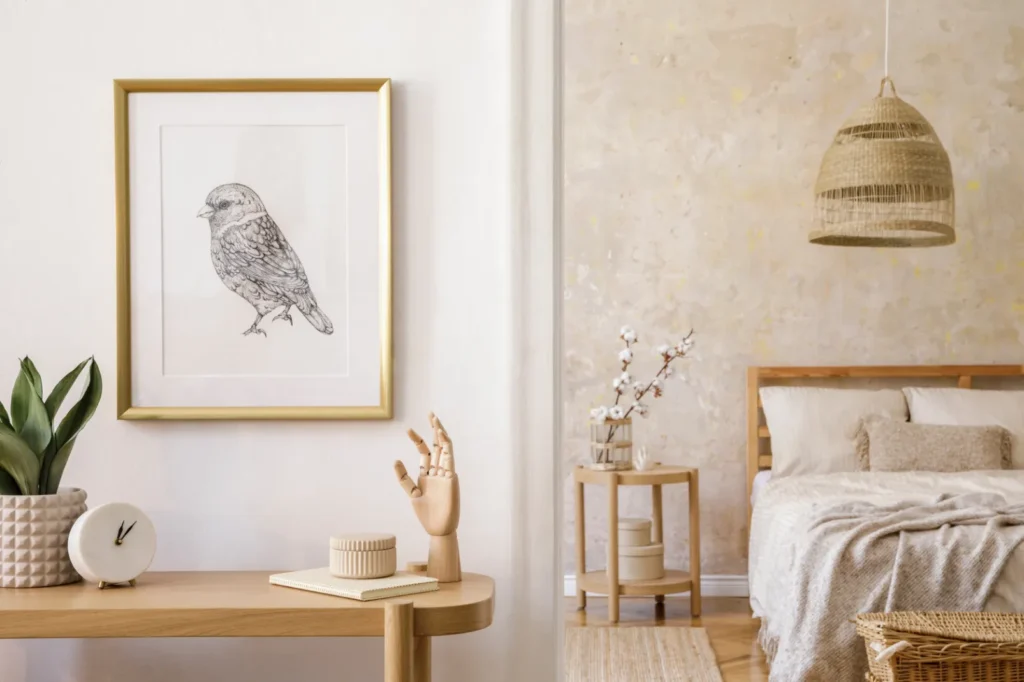
Designing the interiors of your home is a poetic endeavor, akin to composing a symphony where every element harmonizes to narrate your unique story. However, before delving into the captivating world of furniture and materials, a critical phase demands your attention: the meticulous planning of your full home interior. In this section, we’ll explore the intricacies of this crucial process through two fundamental components.
Assessing The Scope And Requirements Of The Project
Determining the Size and Layout of Each Room: Begin the orchestration of your full home interior project by understanding the canvas—the size and layout of each room. Equip yourself with a tape measure and thoroughly examine every corner and crevice of your living space. Pay keen attention to architectural details like windows, doors, and any built-in features.
This meticulous observation forms the cornerstone of a design that not only boasts aesthetic appeal but also seamlessly integrates functionality into the available space. Example: In a cozy urban apartment, where space is a premium, consider multi-functional furniture like a sofa that transforms into a bed or a coffee table with hidden storage compartments. This strategic approach maximizes functionality without compromising on style.
Identifying The Client’s Preferences And Lifestyle
Your place is your sanctuary, and the full home design should reflect the heartbeat of those who inhabit it. Whether you’re designing for yourself or a client, delve into preferences, lifestyle choices, and daily habits. Engage in a thoughtful dialogue to uncover unique aspects—perhaps a penchant for reading, a love for entertaining, or a desire for a tranquil retreat.
Example: For a client who values natural light and a connection with the outdoors, consider design elements that facilitate this connection. Large windows, glass doors, and a cozy window seat can transform a space, inviting the beauty of the external environment indoors.
This nuanced understanding sets the stage for a full home design that transcends mere aesthetics, resonating with the essence of the people who call the space home. Envision your living room not just as a collection of furniture but as a curated retreat, tailored to your specific leisure activities and daily rituals.
As we navigate the upcoming segments of this guide, we’ll delve deeper into translating these insights into tangible design choices. From selecting specific styles that align with your vision to making choices that enhance the functionality of each space, we’re committed to guiding you through a transformative journey. Stay tuned for a comprehensive exploration of full home interior design, where every decision contributes to crafting a personalized masterpiece that is uniquely yours.
Understanding Full Home Design Styles
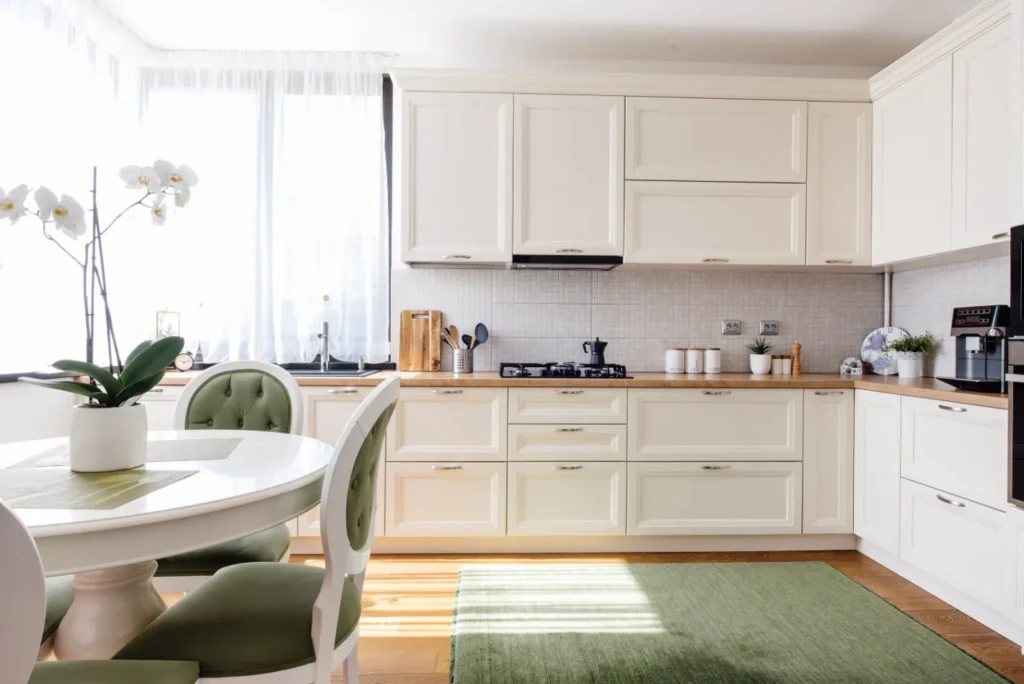
Embarking on your full home design project involves not just filling spaces but crafting an aesthetic symphony that resonates with your taste. To kickstart this creative journey, it’s vital to grasp the various interior design styles that can shape your home’s personality.
Exploring Popular Interior Design Styles
Modern: The modern design style is characterized by clean lines, simplicity, and a focus on functionality. Think of open spaces, neutral color palettes, and a blend of form and function. Modern interiors often feature materials like glass, metal, and concrete. Example: In a modern living room, you might opt for a sleek, low-profile sofa, a glass coffee table, and minimalist wall art to maintain the uncluttered aesthetic.
Traditional: Traditional design exudes timeless elegance and embraces classic elements. Rich woods, ornate details, and warm color palettes define this style. Symmetry and balance are key, to creating a sense of comfort and familiarity. Example: A traditionally styled dining room could showcase a dark wooden dining table with intricate carvings, complemented by upholstered chairs and classic chandeliers.
Minimalist: Minimalism is all about “less is more.” This style embraces simplicity, clean lines, and a focus on essential elements. Neutral colors and uncluttered spaces define minimalist interiors. Example: A minimalist bedroom might feature a platform bed with simple, geometric furniture, and a limited color palette, creating a serene and clutter-free environment.
Eclectic: Eclectic design thrives on a mix of styles, textures, and eras. It’s the perfect playground for those who love to combine diverse elements, creating a vibrant and personalized look for their full home design. Example: In an eclectic living room, you might pair a vintage leather sofa with modern accent chairs, and layer different textures through throw pillows and rugs, resulting in a dynamic and visually stimulating space.
How To Match Furniture And Materials To Specific Design Styles
Understanding your preferred full home design style is the first step; the next is harmonizing your furniture and materials with that chosen style.
Modern Style Harmony: For a modern full home design, opt for furniture with clean lines and minimal embellishments. Materials like glass, chrome, and leather can complement the sleek aesthetic. Consider a streamlined sectional sofa, a glass coffee table, and accent chairs with geometric shapes.
Traditional Elegance: Traditional interiors call for furniture with classic silhouettes and rich materials like wood and upholstery. A tufted sofa, a wooden coffee table with intricate detailing, and classic patterns in textiles embody the traditional style.
Minimalist Serenity: Keep furniture simple and functional in a minimalist setting. A platform bed, modular storage solutions, and furniture with a focus on practicality fit well. Opt for materials like metal, glass, and natural wood to maintain the minimalist essence.
Eclectic Fusion: Embrace the eclectic charm by combining furniture pieces from various styles. Mix materials like wood, metal, and fabric for a dynamic look. An eclectic space might feature a vintage-inspired dining table paired with modern chairs, creating a delightful fusion of eras and textures.
In summary, the key to a successful full home interior design lies in understanding and seamlessly incorporating your chosen style into every room. By aligning furniture and materials with the design style, you ensure a cohesive and visually appealing outcome.
Budgeting For Furniture And Materials

Embarking on a full home interior project is an exciting venture, but it requires a strategic approach to budgeting to ensure your vision aligns with financial realities. Let’s delve into the crucial aspects of budgeting for furniture and materials, making this creative journey not just inspiring but also financially sustainable.
Establishing A Realistic Budget For The Entire Project
Before diving into the world of full home design choices, it’s paramount to set a realistic budget for your full home interior project. This budget serves as your guiding light, helping you make informed decisions and preventing overspending. Begin by assessing your overall financial scope, considering factors such as:
Room Size and Complexity: Larger spaces or those with intricate architectural details may require a higher budget. For instance, a spacious living room might necessitate a larger sofa, more extensive flooring, and additional decor elements.
Material Preferences: Different materials come with varying price tags. Establishing your preferences early on—whether it’s hardwood floors, granite countertops, or custom upholstery—allows you to allocate funds accordingly.
Scope of Customization: If you have a penchant for bespoke furniture or unique, customized features, allocate a portion of your budget to accommodate these personalized touches.
Assigning Budgets To Furniture, Fixtures, And Materials
After establishing your total budget, the next step is to distribute funds across distinct categories, ensuring a well-balanced allocation that mirrors your priorities.
Furniture: Given that furniture is a cornerstone of full home design, allocate a significant portion of your budget to this category. Consider the essential pieces for each room—sofas, beds, dining tables—and allocate funds accordingly. For instance, investing in a high-quality, comfortable sofa for your living room might take precedence.
Fixtures: Lighting fixtures, faucets, and other fixtures contribute to the overall ambiance. Allocate a percentage of your budget to ensure you have sufficient funds for quality fixtures that enhance both functionality and style.
Materials: Materials encompass a broad spectrum, from flooring and wall finishes to textiles. Distribute funds based on the materials that play a pivotal role in achieving your design goals. For example, if you prioritize hardwood floors, allocate a substantial portion of your budget to ensure quality and durability.
Tips For Cost-Effective Sourcing Without Compromising Quality
Budgeting wisely doesn’t mean compromising on quality. Here are practical tips for sourcing furniture and materials cost-effectively:
Explore Second-Hand and Vintage Markets: Consider thrift stores, online marketplaces, or vintage shops for unique finds. Refurbishing a vintage piece can add character to your space at a fraction of the cost.
Compare Prices Across Suppliers: Don’t settle for the first option. Explore various suppliers and compare prices.
Consider Ready-Made Options: While custom pieces offer personalization, ready-made options can be more budget-friendly. Discovering chic, readily available furniture that complements your design concept can result in significant savings.
Take Advantage of Sales and Discounts: Keep an eye on sales, promotions, and clearance events. Timing your purchases during these periods can result in significant savings.
By navigating the budgeting process thoughtfully and seeking cost-effective sourcing options, you pave the way for a full home interior that not only fulfills your design aspirations but also aligns with your financial plan. As we navigate through this guide, we’ll further explore the pragmatic facets of choosing and acquiring elements that breathe life into your vision without exceeding your budget. Stay tuned for more insights and inspiration on crafting a personalized masterpiece within your budgetary constraints.
Researching And Selecting Furniture

Choosing the right furniture is pivotal in shaping the character of your full home interior. In this segment, we’ll set out on an explorative journey, delving into the intricacies of diverse furniture options and offering practical insights to help align them seamlessly with your full home design aspirations.
Exploring Various Furniture Options
Custom-made: Opting for custom-made furniture offers the advantage of tailoring pieces to fit your unique space and style. Although this offers an excellent avenue for expressing individuality, it frequently comes with a heftier price tag.
Ready-made: On the other hand, ready-made furniture provides convenience and accessibility. It’s a quicker option and can be cost-effective without compromising on style. Consider a blend of both—custom pieces for focal points and ready-made for complementary elements. Example: A custom-made sectional sofa could be the centerpiece of your living room, while ready-made accent chairs and side tables complement the full home design.
Sustainable and Eco-Friendly Choices: With a growing emphasis on environmental consciousness, consider sustainable and eco-friendly furniture options. Opting for materials such as reclaimed wood, bamboo, or recycled metal not only promotes environmental sustainability but also introduces a distinctive touch to your living space. Example: Choosing a dining table crafted from reclaimed wood not only promotes sustainability but also introduces a rustic and charming element to your dining area.
Tips For Choosing Furniture That Complements The Full Home Design Concept
Selecting furniture that seamlessly integrates with your design concept is an art. Here are practical tips to guide you:
Consistency in Style: Ensure coherence by sticking to a consistent style throughout your home. Whether it’s modern, traditional, or eclectic, maintaining a unified aesthetic creates a visually appealing and harmonious environment. Example: If your design vision leans towards a minimalist approach, opt for furniture with clean lines and simple silhouettes across all rooms.
Color Harmony: Harmonize colors to create a cohesive look. Consider the color palette of your walls, flooring, and other elements in the room. Contrasting or complementary colors can evoke different moods. Example: In a room with neutral walls, introducing a vibrant accent chair or throw pillows can add a pop of color without overwhelming the space.
Considering Functionality And Comfort In Furniture Selection
Functionality: Prioritize functionality to make the most of your space. Think about how each piece serves its purpose. Furniture with built-in storage or multifunctional designs can be especially beneficial in smaller spaces. Example: A bed with under-bed storage drawers or a coffee table with hidden compartments offers practical solutions for maximizing space utilization.
Comfort: While aesthetics are crucial, never compromise on comfort. Your furniture should invite relaxation and ease. Consider factors like cushioning, ergonomic design, and the intended use of each piece. Example: Choosing a plush, comfortable sofa for your living room ensures that style meets comfort, creating a space where relaxation is paramount.
Conclusion
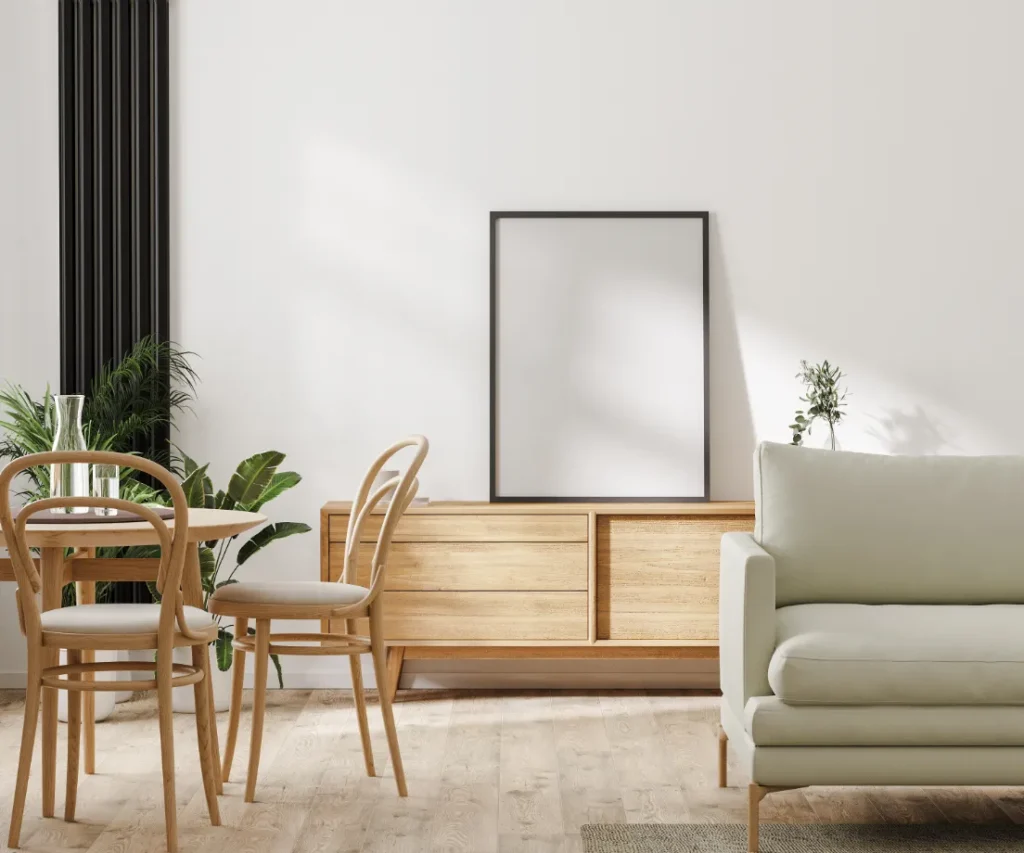
As we conclude this exploration into the foundational aspects of full home interior design, it’s evident that the journey to creating a personalized masterpiece is both thrilling and methodical. Beginning with the understanding that “Design is not just what it looks like and feels like. Design is how it works,” the importance of merging aesthetics with functionality has been a constant theme.
In the initial stages, we emphasized the significance of meticulous planning, urging you to measure every nook, consider architectural details, and understand the unique preferences and lifestyles that shape your design narrative. This preparatory phase sets the stage for a home that not only looks appealing but also resonates with the essence of those who inhabit it.
The exploration of popular interior design styles illuminated the diverse options available, from the sleek lines of modern full home design to the timeless elegance of traditional styles. Understanding these styles allows you to embark on a creative journey that aligns with your vision, turning each room into a curated exhibit of your personality.
Budgeting for furniture and materials emerged as a crucial component, with a focus on realistic financial planning and thoughtful allocation of funds. By establishing a clear budget and distributing resources wisely, you lay the groundwork for a full home interior that is not only aesthetically pleasing but also financially sustainable.
The process of researching and selecting furniture provided insights into the delicate balance between customization and convenience. Whether opting for custom-made or ready-made pieces, the key is to harmonize choices with your design concept. Sustainable options were introduced, underlining the importance of making eco-friendly choices that contribute to both a greener planet and a unique ambiance in your home.
As we journeyed through these foundational sections, the overarching theme is clear: Your full home interior is an artistic canvas awaiting your personal touch. The choices you make, from the furniture styles you select to the materials that define each space, contribute to a living masterpiece that mirrors your individuality.
At The White Frame, we turn extravagant dreams into functional, well-crafted realities. We handcraft luxurious homes, tailored to the preferences of our diverse clientele in Gurgaon, Noida and Delhi NCR. We’re redefining the notion of modern opulence, proving that luxury doesn’t have to strain the budget. We’re driven by a core belief that our in-house technology streamlines processes, making the journey to your dream home effortless and trouble-free. Our team of designers is well-versed in optimizing space, crafting functional, aesthetically pleasing interiors that exude class, sophistication, and beauty.
Explore some of our work here!


